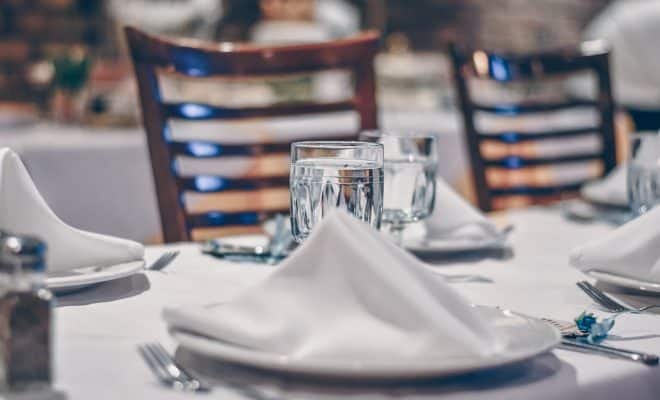The Village Headman

Daddy occasionally takes longer trips away from home, lasting a few days. Rohtak, a small town close to Delhi, offered a unique experience. A village Headman extends an exclusive invitation as part of the trip. The only transportation option to that remote location is an unreliable private bus service, far from Rohtak. The old farmer is progressive in his outlook. His eldest daughter, Indira, has graduated from high school. It is a landmark achievement. She is the first girl from that community and surrounding areas to attain a high school diploma. In order to continue her education to be certified as a teacher, she must move to Rohtak. To accomplish this, she lives alone unsupervised, and another gasping first. After returning home, she has taken on the role of a full-time instructor at the rural school.
The notion of accessible healthcare available to his community appeals to its leader. During one of Daddy’s earlier trips to the area, the Headman befriended him and discussed that possibility. He also wanted to visit the medical facilities in New Delhi, where Daddy worked.
Accompanied by his wife and a duo of younger kids, he arrives in Delhi. My father invited him to come to our home for the two families to meet over lunch. Daddy shared some thoughts with Mom. They may be uncomfortable sitting at a dining table for a meal. We spread a starched white tablecloth on the carpet in the living room. Our dishes are laid out on it. They arrive, shy and unsure of our city ways. Neighbors snicker and speculate if these people have lost their way. Mom and Dad greet our visitors warmly.
Sudhir, Munna, and I are wide-eyed. Dumbfounded, we pondered, who are these country folks? Are these some long-lost relatives? Mummy and daddy are receiving them with such a welcome. Mom happily reaches out to clasp the woman’s hands. Our father puts his arm around the two youngsters, patting their heads. He laughs and shakes hands with the turbaned man. Mummy asks me to serve the refreshing drinks, waiting in the kitchen. The initial shyness is gone as our guests sit cross-legged on the rug. I move about serving the chilled beverages. A delightful vegetarian mean has been prepared, which we offer in the time-honored Indian style. Everyone eats heartily, and the little ones do not turn down second helpings of the dessert.
The mother wanted to see the rasoi (kitchen) and Mummy gave her the grand tour of our caboose of a galley. Recently, it has been remodeled to an all-electric one with countertops and cabinets. The hot plates, toaster, and blender are all plugged in at their positions. One side is occupied by a long, coffin-like icebox-a WWII military relic. Before the update, we had a traditional Indian rasoi. We prepared meals by squatting on a low wooden stool before an ingithi (a coal-burning stove fashioned out of a zinc bucket lined with clay). The prospect of cooking without a smoking coal fire was exciting. The woman points to the little ingithi sitting in one corner. Mummy chuckles and tells her that’s for when the electricity fails.
Delhi is notorious (to this day, several decades later) for sudden power outages. It surprised her to learn that Mummy churns fresh butter every day. She thought city folks bought their butter at the grocery store, which most do. Mom and our guest continue an animated conversation and share the problems and joys of raising a family. The mother is worried her teacher-daughter will have problems marrying. Mummy assures her that today’s young men want an educated, income-earning wife. The two women also exchange health tips.
On a subsequent visit to Rohtak, the chief and his wife invited us to their home for a meal. As we approach the settlement, we noticed the village well with a crowd of gaily dressed women and children around it. They are almost expecting our arrival. We stop to ask for directions, and a small crowd gathers. The entire village has turned out to welcome us! They know we are the city friends of the village leader and his family. A few women approach Mummy with welcoming smiles and folded hands.
Tales of Mummy’s hospitality have preceded us! A few young men offer to walk alongside the vehicle and lead us to the Headman’s home. A flock of youngsters join the little procession. The village comprises low brick homes, a few with second floors. All the houses cluster around the few narrow, meandering streets. Women emerge from their homes to observe the escorted motorcade.
The chief and his sons take us on a tour of the village. The school has three small rooms, a blackboard, and a teacher’s chair. A small post office also functions as a police station, along with a medical dispensary. Although there is no resident doctor in the village, a public health nurse visits once a week. She attends to ailments in the town and distributes medication. In addition, she directs serious cases to the hospital in Rohtak. Emergency handling? Villagers themselves react immediately to anything happening. The local midwife attends to births. Daddy notes the community is spotless and complements the Headman on it. Treating infectious diseases begins with adopting sanitary habits. This village is a model.
We trudge to the fields to see the ripening crops and the extent of the Headman’s lands. The crops are ready for harvesting. Mummy has lots of questions. How do you prevent thieves from stealing your harvest in the night? The Headman’s wife responds. Day and night, every family member takes turns standing guard on the ripening crops. We do not have tractors, but we have animals. Oxen is a common beast of burden in the area. They pull the plow and are hitched to carts for transportation when needed. There is also a camel available to move around the fields. To our amazement, they bring it out. We have seen camels in parades, but are not this close to touching them.
Sudhir and Munna pat the camel’s legs. Mana shrinks back close to Mummy. I ask if we can ride it. The harness is rough to the feel as it kneels for us to climb onto its back. We straddle it and get a firm grip on its hump. Mana sits behind me and hangs on to my waist. As the camel stands up, it gives us a vigorous jostle. Scared as she is, Mana loses her grip, and slides down the camel’s back. She falls to the ground, screaming. Mummy rushes to help her to her feet. She holds her tight till she is calm and wiggles out. Sudhir and I are having a blast. We’ve never ridden a saddle-less camel or any other animal, and we haven’t since. Mummy refuses to let Munna sit with us after Mana slips off. It is too precarious a ride.
We return to the chief’s house and sit for the midday meal. A chatai (large reed mat) is rolled out on the floor for sitting. It is a simple fare. Thick rotis of stone-ground wheat and small bowls of dal (lentils). Dal cooked plain, salted and served with a ladleful of homemade ghee on top. We wash it down with large tumblers of cool lassi (buttermilk). A kheer (an Indian porridge) of coarsely ground wheat cooked and thickened in brown gur (raw brown sugar) and fresh milk is dessert. We eat our fill and more, refusing the additional helpings of ghee, but relishing the simple cuisine. Our appetites have increased after the trek to the fields. The fragrant ghee has been freshly made. They have their own cows, which ensure a daily supply of milk, butter, and ghee.
Daddy explains the advantages of ghee. It is an essential staple of our diet, especially if our daily work involves long hours of hard physical labor, like on this farm. It provides the raw energy needed to work the farm. Wheat is another staple, and a year’s supply is stored in a big earthen house next to the kitchen. The heavy stone chakki (grinding stone) in the kitchen grinds it fresh every morning for the day’s rotis.
The kitchen is the woman’s domain, and no questions are asked. Aside from this, her daily routine includes milking and feeding the cows, grinding the daily quota of wheat, cooking, cleaning, washing, and carrying the midday meal to her husband and sons in the fields-an unending list of chores, as any woman knows.
The women take Mummy aside to their private room; she wants to see their special outfits. Fascinated, I followed behind. Mummy sees their distinctly different clothes. The attire includes long skirts made of heavy cotton, with a significant amount of flair ranging from sixteen to twenty yards. The sheer weight is enough to nip in the waist by wearing these skirts. They wear these to fetch water from the well. One must dress appropriately for the well; it is a ritual. Women also wear silver jewelry around the neck, wrists, and ankles, and around the waist. A light veil is drawn over the face with an ornate pot-rest for the head. This helps balance two to three matkas (brass or earthen pots) on the head.
Morning or evening, the women gather in tight-knit groups and sing as they make their way to the well. A delighted Mummy smiles and asks them to sing a bit. She works an anklet to follow the beat of the song. Their melodious voices mingled with the soft jingle of the anklets-haunting! Hauling water by the bucket, they slowly progress and fill the matkas with water, all the while, exchanging the daily gossip. After a brief rest, they make their way back home. Again, they balance the heavy, overflowing matkas on their heads.
This is what we had witnessed at the well upon our arrival. A mesmerizing sight of vibrant tapestry adorned the women as they gathered around the well. For millennia, artists have captured the subtle nuances of their graceful gait, the swirling colors of skirts and veils, glinting jewelry, and the mini-pyramids of balanced pots. The romance of rural vistas centered on the village well, etched in metal, carved in wood, and painted on walls and canvas, is a much-celebrated aspect of village life.
Reflecting on this brief, once-in-a-lifetime, intimate glimpse of village life in India, my spirits soar and am saddened. For centuries, people have been leading contented, peaceful lives, self-sufficient, and as close to nature as possible. It is depressing to see the outside world creeping into their serene existence. It can only create unknown chaos and turmoil.










